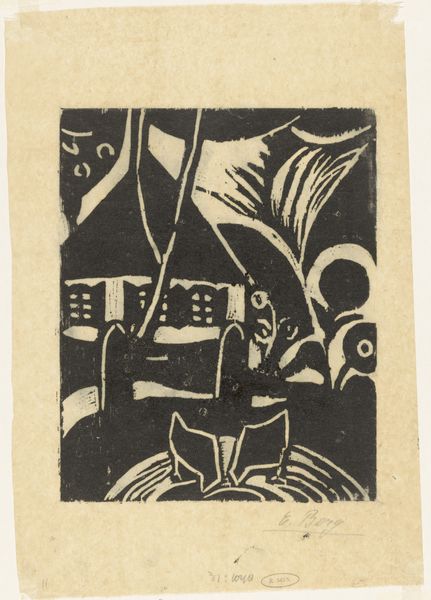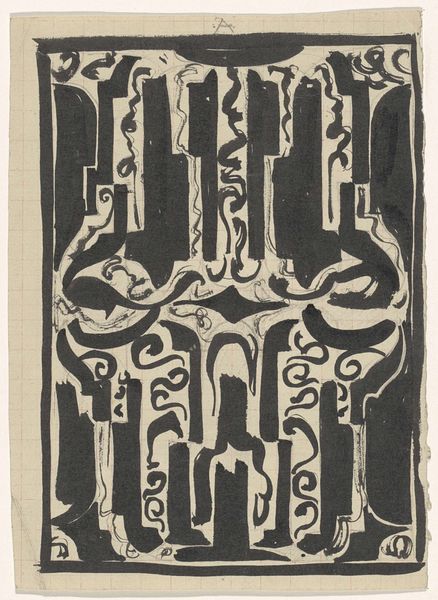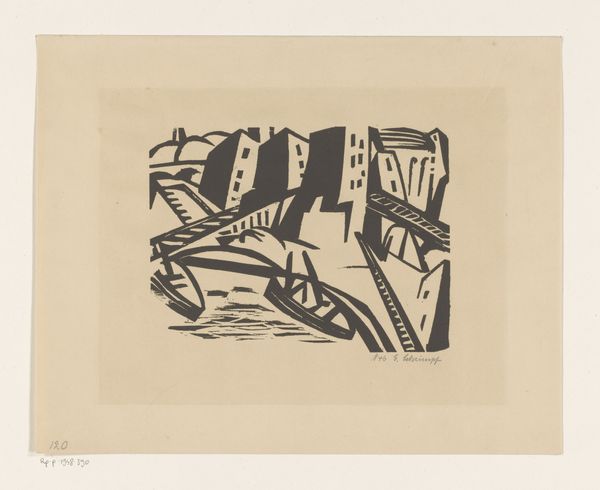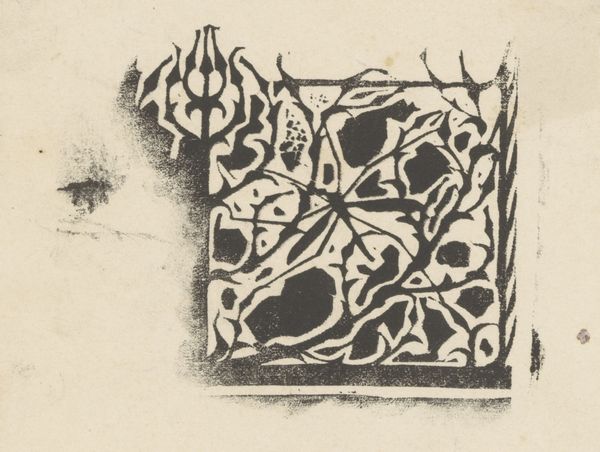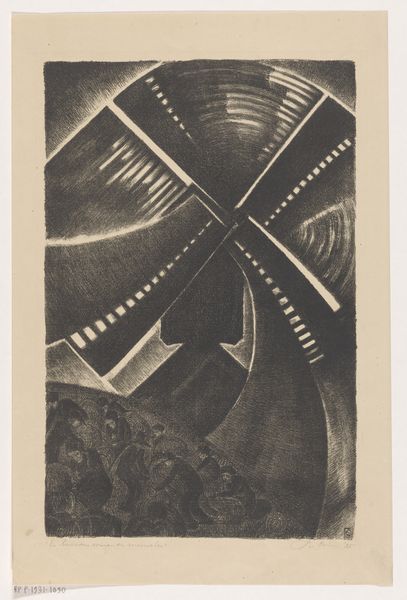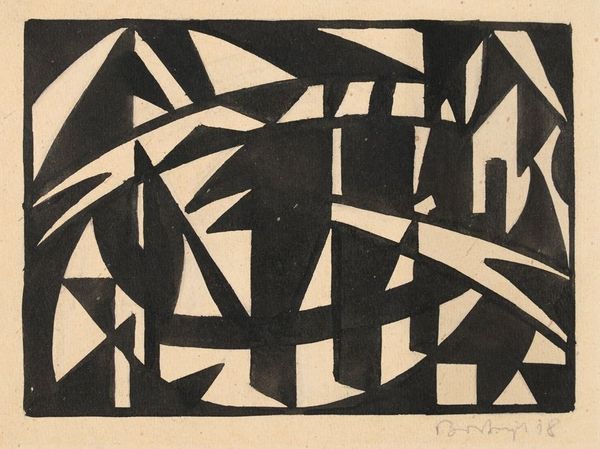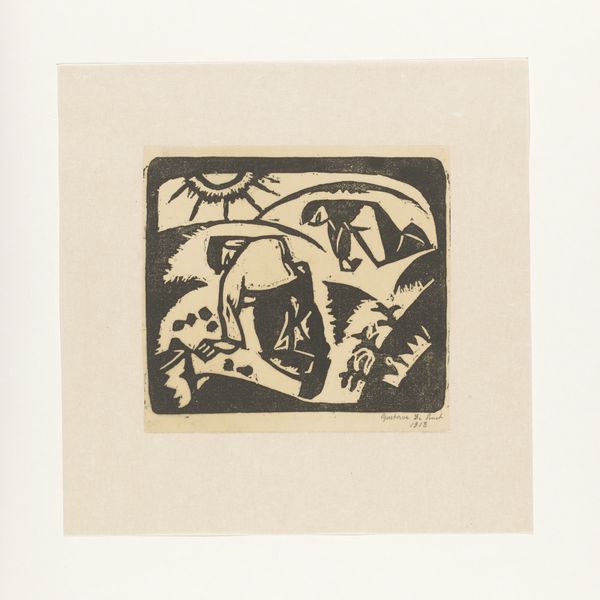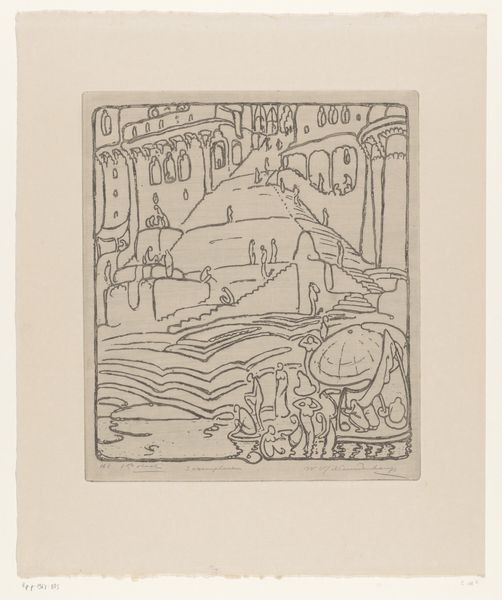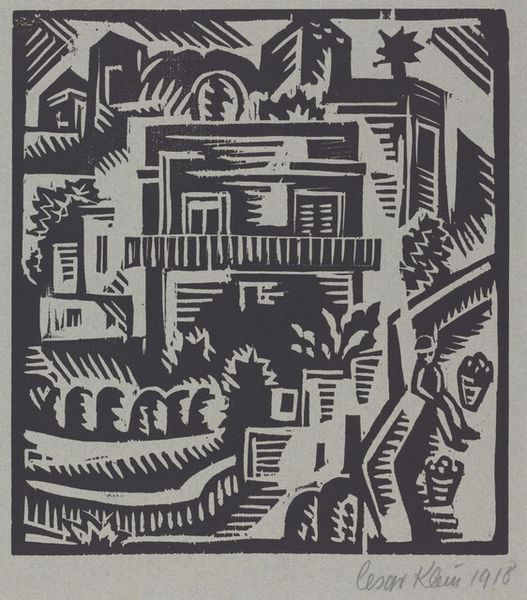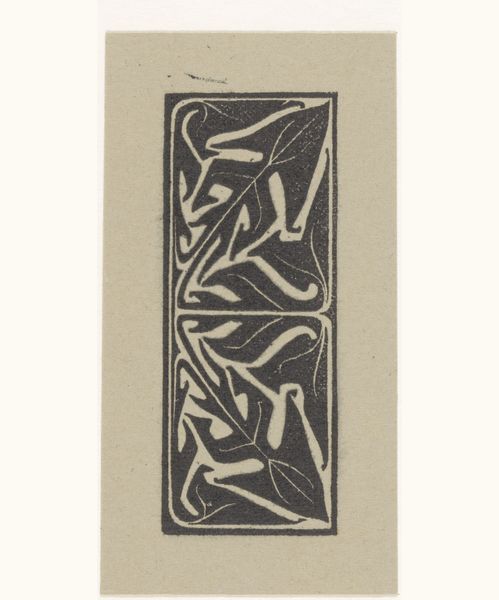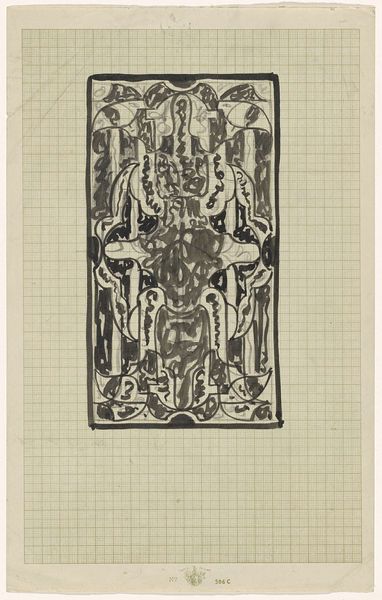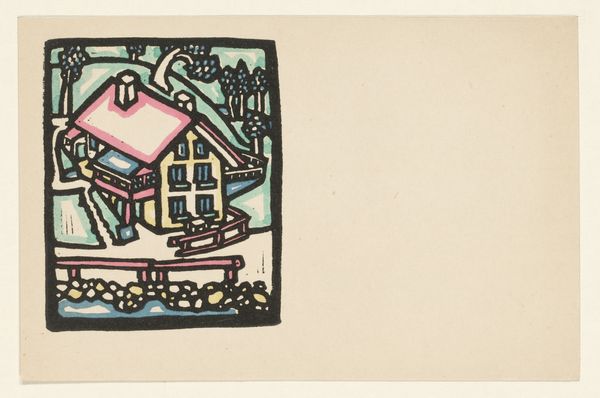
graphic-art, print, woodcut
#
graphic-art
# print
#
landscape
#
abstract
#
geometric
#
expressionism
#
woodcut
Dimensions: height 240 mm, width 358 mm, height 415 mm, width 550 mm
Copyright: Rijks Museum: Open Domain
Editor: Looking at Jacoba van Heemskerck’s "Compositie XVI no. 2" from 1917, a black and white woodcut print, I’m struck by how abstract it is. I can almost make out a landscape, but it's really fragmented. How do you interpret this work in the context of its time? Curator: Well, placing this work within its historical and social context is key. This was made during the First World War, a period of intense upheaval and change. Expressionism was a reaction against the established order, against traditional ways of seeing and representing the world. Considering the public role of art, how do you think this type of abstraction might have been received by viewers at the time? Editor: I imagine it could have been quite challenging. With all that was happening, people were probably looking for something stable, familiar, and maybe representational? This almost seems like the opposite, rejecting the familiar for something more jarring. Curator: Precisely. The "politics of imagery" are important here. Abstract art can be seen as a rejection of traditional power structures. What traditional forms and symbols is this work seemingly dismantling? Look at how geometric shapes and flattened space are used. Editor: The traditional landscape seems broken down to geometric forms... there's a flattening and rearranging happening with recognizable objects... like trees becoming lines and sails becoming triangles. How were women artists perceived making such art at the time? Curator: Female artists faced significant hurdles. Van Heemskerck’s commitment to abstraction placed her outside mainstream expectations. But her association with avant-garde circles and her involvement in exhibitions legitimized her work. Her participation changed the narrative a bit; abstract art at the time served almost as propaganda for how much art was growing. How has seeing the context change how you feel about the work? Editor: It gives me a different lens! Seeing this woodcut print as an expression of the social and political turmoil is so helpful to view abstraction in a context, not just as some rejection of skills. Curator: Exactly! Recognizing that connection deepens our engagement with it and lets us learn a little bit more about the social climate during its creation.
Comments
No comments
Be the first to comment and join the conversation on the ultimate creative platform.
